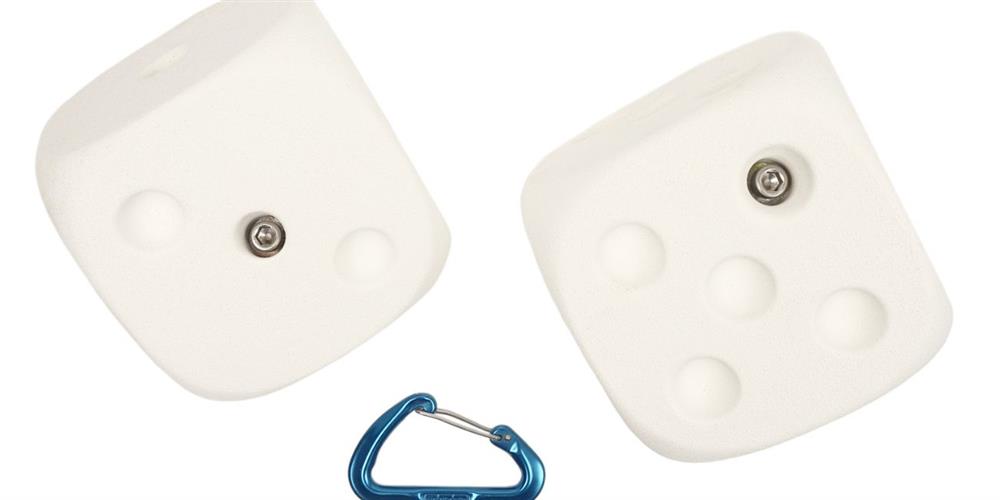Climbing holds are the colorful fixtures on a rock climbing wall that act as the heart of your indoor climbing experience. Understanding the evolution of indoor rock climbing and the holds usedenhances your appreciation of the sport and helps you make informed choices about the setups you use or create.
Explore the exciting history and development of climbing holds. From the primitive designs of the past to today’s sophisticated, ergonomic, and technologically advanced holds.
The Birth of Indoor Climbing
Indoor rock climbing has come a long way since its inception. In the early days, climbers were limited to natural rock formations. However, as the sport gained popularity, enthusiasts sought ways to practice and train indoors. This interest led to the birth of indoor climbing and the creation of the first climbing holds.
The earliest indoor climbing holds were simple and rudimentary. Climbers used materials such as wood and stone to mimic the feel of natural rock and provide a realistic practice space.
These primitive designs lacked the ergonomic considerations and variety modern climbers enjoy today. Yet, they served as a crucial starting point for a dynamic evolution in climbing hold design.
Despite their simplicity, these early holds helped climbers refine their skills in an indoor setting. They laid the foundation for developing specialized materials and innovative designs that would later transform the sport.

Material Innovations
Initially, wood was the go-to choice for crafting holds. Carved wooden holds offered a natural texture and were relatively easy to produce. However, they lacked durability and often splintered, posing safety risks to climbers.
Stone holds replicated the natural climbing experience found outdoors. Early climbing gyms incorporated real rock or stone-like holds to create a more authentic feel, allowing climbers to train indoors while maintaining a connection to outdoor climbing techniques and challenges.
However, the rough nature of these rudimentary holds became an issue as climbers would injure their hands frequently as they scaled up and down.
The quest for better materials led to the exploration of synthetic options. The introduction of plastic climbing holds in 1983 revolutionized climbing hold production. This material had better durability, a wider range of shapes, and more intricate textures than wood or stone. Climbers could experience a variety of grips and challenges that would better prepare them for outdoor climbing.
Synthetic materials also opened the door to vibrant colors and imaginative designs, transforming climbing walls into visually engaging landscapes. The shift to synthetic materials marked a significant milestone in the evolution of climbing holds, setting the stage for further innovations.
The Rise of Polyurethane Resin and Polyester
As plastic became the preferred choice in designing climbing holds, polyurethane resin and polyester entered the scene, adding a new dimension to climbing hold design. These materials offered flexibility, allowing manufacturers to create holds with intricate details and varied textures, enhancing the climbing experience.
Resin holds became popular for their smooth finishes and ability to replicate the feel of natural rock. Polyester, on the other hand, offered strength and resilience, making it a top choice for frequent climbers. The combination of these materials boasted diverse hold styles, such as sloper holds, that catered to climbers of all skill levels.
The versatility of resin and polyester transformed climbing walls into dynamic playgrounds. Climbers could practice their skills on holds with realistic textures, improving their technique and confidence for outdoor climbs. These materials set the stage for the following creative and technical advancements.
The Impact of 3D Printing on Hold Design
As more companies and individuals use 3D printing, hold design and production have reached unprecedented levels of creativity and precision. 3D printing enables manufacturers to prototype and produce holds with complex geometries and unique features that were previously challenging to attain.
The technology allows designers to experiment with shapes and textures, pushing the boundaries of climbing and innovation. With 3D printing, holds are customized to suit specific climbing styles and preferences, offering a personalized experience for climbers. The result is a rich diversity of holds that cater to a wide range of climbers and training objectives.

Ergonomics and Safety
Climbing hold materials and aesthetics are an important part of their evolution, but ergonomics and safety also play a valuable role. Over the years, the development of hold shape designs ensured climbers’ comfort and reduced injury risk.
Modern climbing holds are made with human biomechanics in mind. These offer comfortable grips that minimize strain on the hands and fingers, allowing climbers to focus on their technique and endurance. Ergonomic shapes also reduce the risk of repetitive stress injuries, making climbing a safer sport for anyone who wants to join in on the fun.
Texture and Grip
Texture and grip are critical factors that greatly influence the climbing experience. The right texture differs between a secure hold and a challenging slip. Climbing hold manufacturers, like Atomik Climbing Holds, honed their craft to offer a variety of textures that mimic the feel of natural rock surfaces.
The textures available today cater to different climbing styles and preferences, from rough granules to smooth surfaces. Climbers may train on holds that simulate the tactile sensations of outdoor climbing, enhancing their skills and adaptability.
Modular Designs
Modular designs revolutionized the way climbing routes are set and experienced. These designs allow climbing walls to feature interchangeable holds, enabling endless possibilities for route configurations.
Climbers may now create personalized challenges that cater to their skill levels and training goals. Modular holds offer the flexibility to adjust route difficulty, encouraging climbers to push their limits and explore new techniques.
The Influence of Competition Climbing
Competition climbing played a significant role in shaping hold styles. The demands of competitive routes require holds that test climbers’ strength, precision, and problem-solving abilities.
Holds used in competitions often challenge climbers with unique shapes and demanding grips. These prioritize creativity and innovation, offering routes requiring dynamic movements and strategic planning. The influence of competition climbing pushed designers to think outside the box, resulting in holds that captivate and challenge climbers.
The Advancement of Hold Design
Climbers play an essential role in the climbing hold’s advancement. The climbing community’s feedback and insights drive continuous improvements and innovations in hold design.
Atomik Climbing Holds engages with our customers and considers your feedback to create the best designs for your walls. This collaborative approach ensures that our holds remain relevant, safe, and enjoyable for a broad range of climbers. Community-driven design fosters a sense of ownership and connection among climbers, empowering them to contribute to the sport’s progression.
Future Trends
The future of climbing is ripe with possibilities as technology, environmental consciousness, and community engagement converge to shape the next wave of innovations.
Climbing holds will continue to evolve in response to emerging trends and climbers’ changing needs. Anticipate the integration of advanced materials that offer enhanced durability and eco-friendliness.
Indoor rock climbing holds have evolvedfrom basic stone replicas to a diverse array of vibrant, ergonomically designed synthetic holds, enhancing both performance and creativity for climbers. And the enduring passion for climbing continues to drive progress in hold design, ensuring that climbers of all levels can enjoy safe, challenging, and rewarding adventures. Whether you’re setting up your home climbing space or practicing your first crimp, the development of climbing holds is a testament to the ingenuity and determination of the climbing community.



